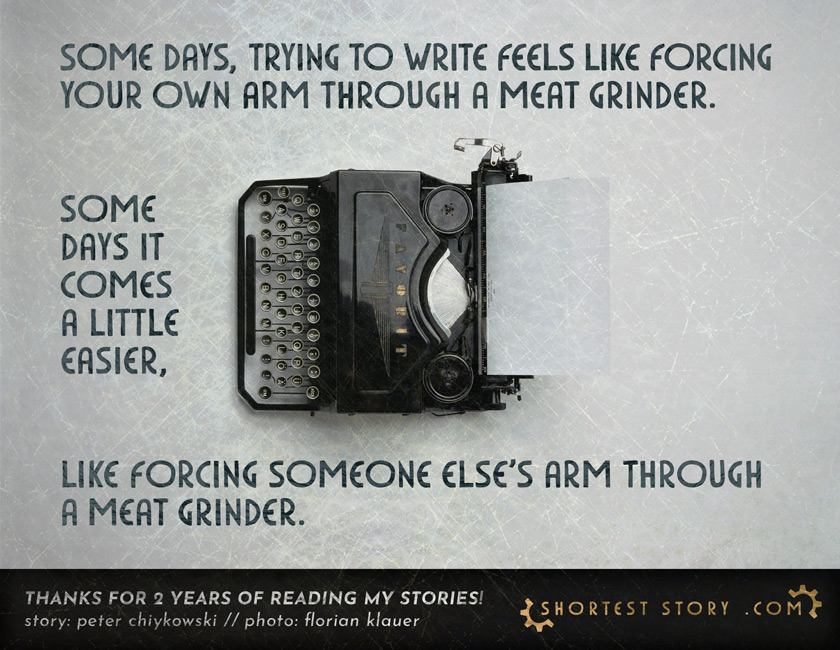Writing a book, or even a short story, can feel like a long and harrowing quest, especially when your story feels "stuck."
When you set out to write novel, it's easy to feel like the Fellowship of the Ring leaving Rivendell: full of hope, excited for the road head, confident in our abilities.
But by the time you hit the halfway hump, things are looking grim: Gandalf is dead, Boromir is full of arrows, and it feels like we've run out of steam and lost our way.
Believe me, I know how it feels to be grinding away at your writing, getting nowhere.
That’s why I’ve come up with a few quick exercises for diagnosing your story and finding new places to take it. I’m writing this for workshopping novels, but the same tricks work for short stories, screenplays, D&D campaigns, and more!
Running Diagnostics: Boil Down Your Story
Boiling down your story to a single sentence summary always feels impossible, but is really helpful for figuring out what the beating heart of your novel is. There are lots of ways to write boil-downs, but I always return to the brilliant observation of Canadian novelist Douglas Glover:
A story consists of someone wanting something and having trouble getting it.
I like my boil-downs to focus on these elements:
- Someone (aka, who my story is about)
- Wanting (aka, what their desire or motivation is)
- Something (aka, the elements of the story their desire connects to)
- Trouble (aka, the conflict the character will have to resolve or overcome)
It’s a simple formula, but it works wonders. In fact, the keen observer might notice that I built The Story Engine, my deck of endless, customizable writing prompts, on a similar structure. If you like, The Story Engine Deck to help you get the hang of the boil-down.

But you can also just write out your boil-down freeform.
A boil-down of Lord of The Rings might look like this:
Frodo Baggins wants to destroy the One Ring and save Middle Earth, but he will have to take a long and difficult journey full of danger and temptation.

There are a lot of subplots to Lord of the Rings, and if the book were centered on other characters, you might frame the boil-down differently, but this is the heart of the story.
Once you have your boil-down, it becomes easier to figure out where and why your story is stuck. Here are some options for using your boil-down to get your story back on the rails!
Exercise #1: Reboot Your Character’s Motive
When plotlines lose steam, it’s usually because characters lose steam, or lose sight of their goals. When this happens, the best thing you can do is reconnect them with their motivation.
There’s a few things you can try:
- Write a scene reconnecting them with whatever it was that set them off on their journey in the first place. (Think of Samwise Gamgee’s “Do you remember the Shire” pep talk.)
- If the character hits a setback, use that to raise the stakes or give them a taste of failure to remind them what happens if they don't succeed. (Think of Frodo seeing a vision of Sauron’s future conquest in the pool of Lothlorien.)
- Give them a pep talk from a mentor, someone who helped prepare them for moments of adversity. (Think of Frodo remembering Gandalf’s words about pity and sparing Gollum’s life.)

These can often get a story back on track when a character loses sight of their motivation.
Exercise #2: Create Competition for Your Character’s Goal
Another issue that can slow a story down is the conflict becoming stale.
A great way to introduce new dynamic conflicts, or to force your character to step up their pursuit of their goal, is to think about how others characters in the story connect with their goal.
Here are some exercises you could try:
- Bring back an old character whose motivation puts them in competition or collaboration with the main character. (Think of Gollum appearing to help or hurt Frodo and Sam at key moments when the story starts to slog along.)
- Introduce a new character for the same reasons. (Think of Faramir capturing Frodo and Sam, but ultimately helping them on their way.)
If you’re using The Story Engine Deck to map your story, you can do this by taking your boil-down, and introducing a new branch with an Agent and Engine that connect to the same goal as you main character.
The "Clash of Wills" prompt from The Story Engine Deck guidebook is a good example of one way this can work.

A bloody god wants to destroy the world with a dire contagion but they must face their greatest fear. A wounded villain wants to find redemption in the dire contagion.
This provides inherent conflict and tension that drives our character forward instead of setting them back.
Exercise #3: Work Backwards From the End
Often, you know where your story ends. A climactic confrontation on Mount Doom. An epic battle at the gates of Mordor. Sometimes, if you’re stuck halfway, it helps to look at where you want the story to go, and work backwards from the moments that are most firmly cemented in your mind.
If you’re using The Story Engine Deck to map your story, the best way to do this is examine how your Engine card (your character's desire) drives toward their Conflict card. Often our characters' goals demand that they make a difficult choice, pay a significant price, or overcome a remarkable obstacle, in order to achieve their goals.

When we have a sense of how that conflict might resolve, we can reverse-engineer the elements of the story we need to get in place to set that up, and express those as plot points.
In the case of dear Frodo, we know his conflict focuses on a journey of danger and temptation, and that any climax will involve the destruction of the One Ring.
- For Frodo to make his choice to cast the ring into Mount Doom, we need a guide (Gandalf, then Gollum), a helper (Samwise Gamgee), a way to escape (the eagles), and a reason to overcome the temptation of the ring (in this case, Sam’s support and Gollum’s very pointy teeth). You can draw straight lines from each of those scenes to earlier scenes that introduce these elements, from Gandalf's escape Orthanc on the back of an eagle to Gollum trying to drive a wedge between Frodo and Sam.
- To set up Aragorn’s last stand at the Gates of Mordor, we need to set up: the reuniting of the fellowship, the death of the steward of Gondor, insight into the hobbits’ predicament needing a distraction, reaffirmed faith in the strength of men, and the momentum of a previous military victory. This gives us reason to set up scenes like the battle of Pelennor Fields, the death of Denethor, and the slaying of the Witch King of Angmar.
List out the elements you need to get in place to reach your climate, and write out potential scenes that could give characters the resources, information, motivation, relationships, or positioning they need for those climaxes to feel satisfying.

Above All, Stick With It
Sometimes, like Frodo and Sam hoofing it through Mordor, you just need to stick with it.
Dedicate a chunk of time every day to workshopping your story. Allow yourself to use some of that writing time to read other stories, or to write unrelated stories, and see if it unlocks any perspective on your current predicament.
It took Tolkien 17 years to write Lord of the Rings. Often, the next big element of the story came from the experiences he allowed himself to live and reflect on.
Sometimes, where inspiration fails, persistence and hard work persevere.
If you need something to help you inspire new storylines and characters, or to help you workshop your story map, check out The Story Engine Deck. You can get 10% off your first order using the form below.


